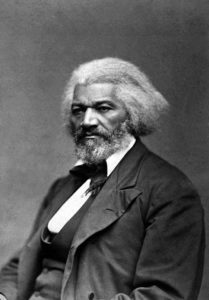 On this day in 1895, social reformer, abolitionist, orator, writer, and statesman Frederick Douglass died from a heart attack in his home in Washington D. C., at the age of 77. Born Frederick Augustus Washington Bailey; c. February 1818 in . After escaping from slavery in Maryland, he became a national leader of the abolitionist movement in Massachusetts and New York, gaining note for his oratory and incisive antislavery writings. In his time, he was described by abolitionists as a living counter-example to slaveholders’ arguments that slaves lacked the intellectual capacity to function as independent American citizens. Northerners at the time found it hard to believe that such a great orator had once been a slave.
On this day in 1895, social reformer, abolitionist, orator, writer, and statesman Frederick Douglass died from a heart attack in his home in Washington D. C., at the age of 77. Born Frederick Augustus Washington Bailey; c. February 1818 in . After escaping from slavery in Maryland, he became a national leader of the abolitionist movement in Massachusetts and New York, gaining note for his oratory and incisive antislavery writings. In his time, he was described by abolitionists as a living counter-example to slaveholders’ arguments that slaves lacked the intellectual capacity to function as independent American citizens. Northerners at the time found it hard to believe that such a great orator had once been a slave.
Douglass wrote several autobiographies. He described his experiences as a slave in his 1845 autobiography, Narrative of the Life of Frederick Douglass, an American Slave, which became a bestseller, and was influential in promoting the cause of abolition, as was his second book, My Bondage and My Freedom (1855). After the Civil War, Douglass remained an active campaigner against slavery and wrote his last autobiography, Life and Times of Frederick Douglass. First published in 1881 and revised in 1892, three years before his death, it covered events during and after the Civil War. Douglass also actively supported women’s suffrage, and held several public offices. Without his approval, Douglass became the first African American nominated for Vice President of the United States as the running mate and Vice Presidential nominee of Victoria Woodhull, on the Equal Rights Party ticket.
Douglass was a firm believer in the equality of all peoples, whether black, female, Native American, or recent immigrant. He was also a believer in dialogue and in making alliances across racial and ideological divides, and in the liberal values of the U.S. Constitution. When radical abolitionists, under the motto “No Union with Slaveholders”, criticized Douglass’ willingness to engage in dialogue with slave owners, he famously replied: “I would unite with anybody to do right and with nobody to do wrong.”
Douglass was married to Anna Murray on September 15, 1838, by a black Presbyterian minister, just eleven days after Douglass had reached New York. After Anna died in 1882, Douglass married again, to Helen Pitts, a white suffragist and abolitionist from Honeoye, New York, in 1884. A graduate of Mount Holyoke College (then called Mount Holyoke Female Seminary), Pitts worked on a radical feminist publication named Alpha while living in Washington, D.C. She later worked as Douglass’s secretary.
Their marriage provoked a storm of controversy, since Pitts was both white and nearly 20 years younger than Douglass. Her family stopped speaking to her; his children considered the marriage a repudiation of their mother. But feminist Elizabeth Cady Stanton congratulated the couple. Douglass responded to the criticisms by saying that his first marriage had been to someone the color of his mother, and his second to someone the color of his father.
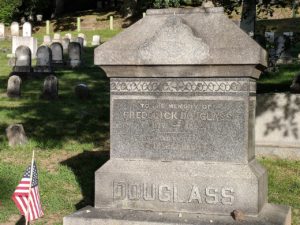 The Final Footprint
The Final Footprint
His funeral was held at the Metropolitan African Methodist Episcopal Church. Thousands of people passed by his coffin to show their respect. Although Douglass had attended several churches in the nation’s capital, he had a pew here and donated two standing candelabras when this church had moved to a new building in 1886. He also gave many lectures there, including his last major speech, “The Lesson of the Hour.”
Douglass’ coffin was transported back to Rochester, New York, where he had lived for 25 years, longer than anywhere else in his life. He was buried next to Anna in the Douglass family plot of Mount Hope Cemetery, and Helen joined them in 1903. Another notable final footprint at Mount Hope is Susan B. Anthony.
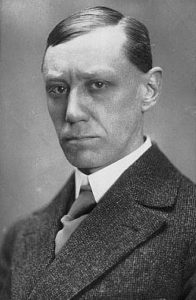 On this day in 1936, actor Max Schreck died from a heart attack in Munich at the age of 56. Born Friedrich Gustav Maximilian Schreck on 6 September 1879 in Berlin. Perhaps best known for his lead role as the vampire Count Orlok in the film Nosferatu (1922).
On this day in 1936, actor Max Schreck died from a heart attack in Munich at the age of 56. Born Friedrich Gustav Maximilian Schreck on 6 September 1879 in Berlin. Perhaps best known for his lead role as the vampire Count Orlok in the film Nosferatu (1922).
Schreck was married to actress Fanny Normann, who appeared in a few films, often credited as Fanny Schreck.
On 19 February 1936, Schreck had just played The Grand Inquisitor in the play Don Carlos. That evening he felt unwell and the doctor sent him to the hospital where he died early the next morning.

The Final Footprint
His obituary especially praised his role as The Miser in Molière’s comedy play. He was buried on 14 March 1936 at Wilmersdorfer Waldfriedhof Stahnsdorf in Brandenburg.
#RIP #OTD in 1993 automobile designer, inventor, mechanic, engineer, winemaker, industrialist, founder of Automobili Lamborghini, Ferruccio Lamborghini died at Silvestrini Hospital in Perugia after suffering a heart attack, aged 76. Cimitero di Renazzo, Italy
#RIP #OTD in 1996 artist’s model (more than 12 statues in New York City), actress (Inspiration), America’s first supermodel, Audrey Munson died at St. Lawrence State Hospital for the Insane in Ogdensburg, New York aged 104. New Haven Cemetery in New Haven, New York
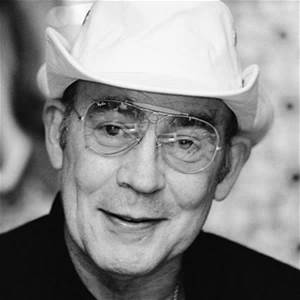 On this day in 2005, journalist and author Hunter S. Thompson died from a self-inflicted gunshot at his home, Owl Farm near Woody Creek, Colorado, at the age of 67. Born Hunter Stockton Thompson on 18 July 1937 in Louisville, Kentucky. Thompson traveled frequently, including stints in California, Puerto Rico and Brazil, before settling in Aspen, Colorado, in the early 1960s. He became internationally known with the publication of Hell’s Angels: The Strange and Terrible Saga of the Outlaw Motorcycle Gangs (1967). Thompson had spent a year living and riding with the Angels, experiencing their lives and hearing their stories first hand. With the publication in 1970 of “The Kentucky Derby Is Decadent and Depraved” he became a counter cultural figure, with his own brand of New Journalism he termed “Gonzo”, an experimental style of journalism where reporters involve themselves in the action to such a degree that they become central figures of their stories. The work he perhaps remains best known for is Fear and Loathing in Las Vegas: A Savage Journey to the Heart of the American Dream (1972), a rumination on the failure of the 1960s counterculture movement. It was first serialized in Rolling Stone, a magazine with which Thompson would be long associated, and was released as a film starring Johnny Depp and directed by Terry Gilliam in 1998. Politically minded, Thompson ran unsuccessfully for sheriff of Pitkin County, Colorado, in 1970, on the Freak Power ticket. He was well known for his inveterate hatred of Richard Nixon, whom he claimed represented “that dark, venal, and incurably violent side of the American character” and whom he characterized in what might be his greatest contribution to American Literature, Fear and Loathing on the Campaign Trail ’72. Thompson’s output notably declined from the mid-1970s, as he struggled with the consequences of fame, and he complained that he could no longer merely report on events as he was too easily recognized. He was also known for his lifelong use of alcohol and illegal drugs; his love of firearms, and his iconoclastic contempt for authoritarianism, and remarked that, “I hate to advocate drugs, alcohol, violence, or insanity to anyone, but they’ve always worked for me.”
On this day in 2005, journalist and author Hunter S. Thompson died from a self-inflicted gunshot at his home, Owl Farm near Woody Creek, Colorado, at the age of 67. Born Hunter Stockton Thompson on 18 July 1937 in Louisville, Kentucky. Thompson traveled frequently, including stints in California, Puerto Rico and Brazil, before settling in Aspen, Colorado, in the early 1960s. He became internationally known with the publication of Hell’s Angels: The Strange and Terrible Saga of the Outlaw Motorcycle Gangs (1967). Thompson had spent a year living and riding with the Angels, experiencing their lives and hearing their stories first hand. With the publication in 1970 of “The Kentucky Derby Is Decadent and Depraved” he became a counter cultural figure, with his own brand of New Journalism he termed “Gonzo”, an experimental style of journalism where reporters involve themselves in the action to such a degree that they become central figures of their stories. The work he perhaps remains best known for is Fear and Loathing in Las Vegas: A Savage Journey to the Heart of the American Dream (1972), a rumination on the failure of the 1960s counterculture movement. It was first serialized in Rolling Stone, a magazine with which Thompson would be long associated, and was released as a film starring Johnny Depp and directed by Terry Gilliam in 1998. Politically minded, Thompson ran unsuccessfully for sheriff of Pitkin County, Colorado, in 1970, on the Freak Power ticket. He was well known for his inveterate hatred of Richard Nixon, whom he claimed represented “that dark, venal, and incurably violent side of the American character” and whom he characterized in what might be his greatest contribution to American Literature, Fear and Loathing on the Campaign Trail ’72. Thompson’s output notably declined from the mid-1970s, as he struggled with the consequences of fame, and he complained that he could no longer merely report on events as he was too easily recognized. He was also known for his lifelong use of alcohol and illegal drugs; his love of firearms, and his iconoclastic contempt for authoritarianism, and remarked that, “I hate to advocate drugs, alcohol, violence, or insanity to anyone, but they’ve always worked for me.” 
The Final Footprint – On 20 August 2005, in a private ceremony, Thompson’s cremated remains were fired from a cannon. This was accompanied by red, white, blue and green fireworks-all to the tune of Norman Greenbaum’s “Spirit in the Sky” and Bob Dylan’s “Mr. Tambourine Man.” The cannon was placed atop a 153-foot (47 m) tower which had the shape of a double-thumbed fist clutching a peyote button, a symbol originally used in his 1970 campaign for Sheriff of Pitkin County, Colorado. Apparently, the funeral was funded by Depp. He told the Associated Press, “All I’m doing is trying to make sure his last wish comes true. I just want to send my pal out the way he wants to go out.” Other notable attendees included U.S. Senator John Kerry, former U.S. Senator George McGovern, 60 Minutes correspondents Ed Bradley and Charlie Rose, Jack Nicholson, John Cusack, Bill Murray, Benicio del Toro, Sean Penn, Josh Hartnett, Lyle Lovett, and John Oates.
| Sandra Dee |
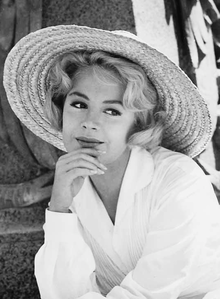 Dee in 1961 |
|
On this day in 2005, actress Sandra Dee died at age 62 of complications from kidney disease, brought on by a lifelong struggle with anorexia nervosa at the Los Robles Hospital & Medical Center in Thousand Oaks, California. Born Alexandra Zuck on April 23, 1942 in Bayonne, New Jersey. Dee began her career as a child model, working in commercials before transitioning to film in her teenage years. Best known for her portrayal of ingénues, Dee earned a Golden Globe Award as one of the year’s most promising newcomers for her performance in Robert Wise’s Until They Sail (1958). She became a teenage star for her subsequent performances in Imitation of Life and Gidget (both 1959), which made her a household name.
Dee married Bobby Darin in 1960. They met while filming Come September, which was released in 1961. She and Darin divorced in 1967. Bobby Darin died at age 37 in 1973. She never remarried.
Pop culture references:
- One of the popular songs of the Broadway musical and movie Grease (1978) is “Look at Me, I’m Sandra Dee”, in which the rebellious Rizzo satirizes new girl Sandra Dumbrowski (Sandra Dee Olson in the film) and her clean-cut image, likened to Sandra Dee’s (the character’s name is thus a play on the real-life actress). According to a family friend, Dee “always had a big laugh about it.”
- Dee’s life with Bobby Darin was dramatized in the film Beyond the Sea (2004), in which Kevin Spacey played Darin and Dee was played by Kate Bosworth.
- She is referenced in the Rodney Crowell song “I Ain’t Living Long Like This” (“I live with Angel she’s a roadhouse queen, makes Texas Ruby look like Sandra Dee”)
- She is also referenced in the Badly Drawn Boy song “One Last Dance” (“To this day I’m lovin’ you, we know what we wanna do. I am your Troy Donahue and you are my Sandra Dee”)
- In the movie Kissing Jessica Stein, a character mentions her by saying: “I took out an ad for Christ’s sake. And I ended up with the Jewish Sandra Dee.”
- The Mötley Crüe song Come On And Dance (1981) references her: “Electric love/Like Sandra Dee.”
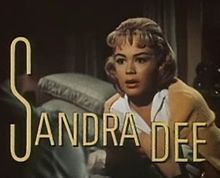
In Imitation of Life trailer (1959)
The Final Footprint

She is entombed at Forest Lawn Memorial Park Cemetery in Hollywood Hills. Other notable final footprints at Hollywood Hills include; Gene Autry, Albert “Cubby” Broccoli, David Carradine, Scatman Crothers, Bette Davis, Ronnie James Dio, Michael Clarke Duncan, Carrie Fisher, Bobby Fuller, Andy Gibb, Michael Hutchence, Jill Ireland, Al Jarreau, Buster Keaton, Lemmy Kilmister, Jack LaLanne, Nicolette Larson, Liberace, Strother Martin, Jayne Meadows, Brittany Murphy, Ricky Nelson, Bill Paxton, Brock Peters, Freddie Prinze, Lou Rawls, Debbie Reynolds, Telly Savalas, Lee Van Cleef, and Paul Walker.
Have you planned yours yet?
Follow TFF on twitter @RIPTFF
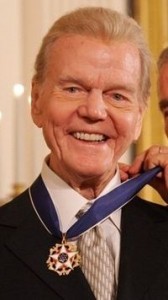 On this day in 2009, radio broadcaster, Paul Harvey, died in Phoenix, Arizona at the age of 90. Born Paul Harvey Aurandt on 4 September 1918 in Tulsa, Oklahoma. He broadcast News and Comment on weekday mornings and mid-days, and at noon on Saturdays, as well as his famous The Rest of the Story segments. His listening audience was estimated, at its peak, at 24 million people a week. Paul Harvey News was carried on 1,200 radio stations, 400 Armed Forces Network stations and 300 newspapers. Harvey was noted for his folksy delivery and his dramatic pauses and quirky intonations. He explained his relationship with his sponsors, saying “I am fiercely loyal to those willing to put their money where my mouth is.” Harvey was married to Lynne “Angel” Cooper (1940 – 2008 her death).
On this day in 2009, radio broadcaster, Paul Harvey, died in Phoenix, Arizona at the age of 90. Born Paul Harvey Aurandt on 4 September 1918 in Tulsa, Oklahoma. He broadcast News and Comment on weekday mornings and mid-days, and at noon on Saturdays, as well as his famous The Rest of the Story segments. His listening audience was estimated, at its peak, at 24 million people a week. Paul Harvey News was carried on 1,200 radio stations, 400 Armed Forces Network stations and 300 newspapers. Harvey was noted for his folksy delivery and his dramatic pauses and quirky intonations. He explained his relationship with his sponsors, saying “I am fiercely loyal to those willing to put their money where my mouth is.” Harvey was married to Lynne “Angel” Cooper (1940 – 2008 her death). 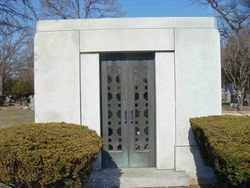
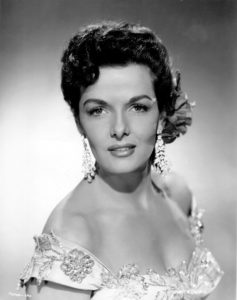 On this day in 2011 actress Jane Russell died at her home in Santa Maria of a respiratory-related illness at the age of 89. Born Ernestine Jane Geraldine Russell on June 21, 1921 in Bemidji, Minnesota. She was one of Hollywood’s leading sex symbols in the 1940s and 1950s.
On this day in 2011 actress Jane Russell died at her home in Santa Maria of a respiratory-related illness at the age of 89. Born Ernestine Jane Geraldine Russell on June 21, 1921 in Bemidji, Minnesota. She was one of Hollywood’s leading sex symbols in the 1940s and 1950s.




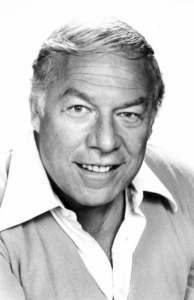 On this day in 2016, United States Army veteran, actor George Kennedy died of a heart ailment at an assisted living facility in Middleton, Idaho, ten days after his 91st birthday. Born George Harris Kennedy Jr. on February 18, 1925 in New York City. Kennedy appeared in more than 200 film and television productions. He played “Dragline” opposite Paul Newman in Cool Hand Luke (1967), winning the Academy Award for Best Supporting Actor for the role and being nominated for the corresponding Golden Globe. He received a second Golden Globe nomination for portraying Joe Patroni in Airport (1970).
On this day in 2016, United States Army veteran, actor George Kennedy died of a heart ailment at an assisted living facility in Middleton, Idaho, ten days after his 91st birthday. Born George Harris Kennedy Jr. on February 18, 1925 in New York City. Kennedy appeared in more than 200 film and television productions. He played “Dragline” opposite Paul Newman in Cool Hand Luke (1967), winning the Academy Award for Best Supporting Actor for the role and being nominated for the corresponding Golden Globe. He received a second Golden Globe nomination for portraying Joe Patroni in Airport (1970).


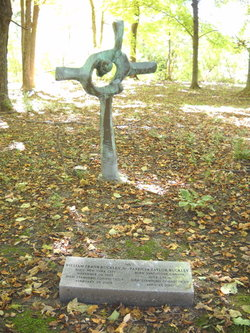
 On this day in 2015, actor, film director, photographer, author, singer, and songwriter, Mr. Spock, Leonard Nimoy died of complications from COPD at the age of 83, in his Bel Air home. Born Leonard Simon Nimoy on March 26, 1931 in the West End
On this day in 2015, actor, film director, photographer, author, singer, and songwriter, Mr. Spock, Leonard Nimoy died of complications from COPD at the age of 83, in his Bel Air home. Born Leonard Simon Nimoy on March 26, 1931 in the West End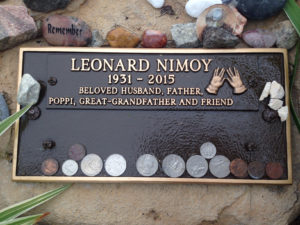
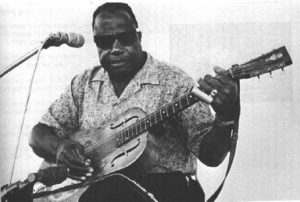
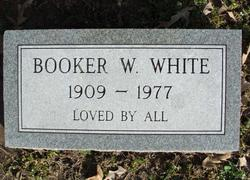
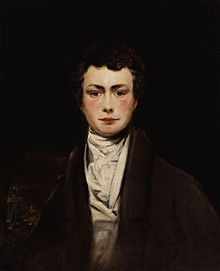 On this day in 1852, poet, singer, songwriter, and entertainer Thomas Moore died being cared for by his wife at Sloperton Cottage, Bromham, Wiltshire, England at the age of 72. Born at 12 Aungier Street in Dublin, over his father’s grocery shop, his father being from the Kerry Gaeltacht and his mother, Anastasia Codd, from Wexford. Perhaps best remembered for the lyrics of “The Minstrel Boy” and “The Last Rose of Summer”. He was responsible, with John Murray, for burning Lord Byron‘s memoirs after his death, at the urging of Byron’s family. In his lifetime he was often referred to as Anacreon Moore. Moore married an actress, Elizabeth “Bessy” Dyke. Moore is often considered Ireland’s National Bard.
On this day in 1852, poet, singer, songwriter, and entertainer Thomas Moore died being cared for by his wife at Sloperton Cottage, Bromham, Wiltshire, England at the age of 72. Born at 12 Aungier Street in Dublin, over his father’s grocery shop, his father being from the Kerry Gaeltacht and his mother, Anastasia Codd, from Wexford. Perhaps best remembered for the lyrics of “The Minstrel Boy” and “The Last Rose of Summer”. He was responsible, with John Murray, for burning Lord Byron‘s memoirs after his death, at the urging of Byron’s family. In his lifetime he was often referred to as Anacreon Moore. Moore married an actress, Elizabeth “Bessy” Dyke. Moore is often considered Ireland’s National Bard.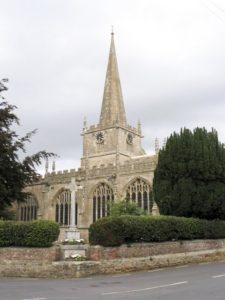
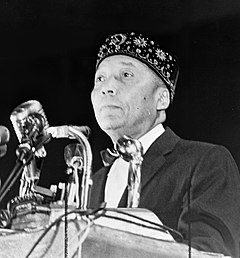
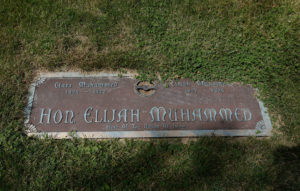
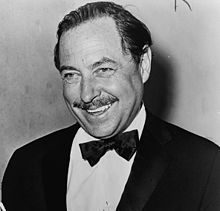 On this day in 1983, playwright, two-time Pulitzer Prize winner, Tony winner, Tennessee Williams, died from an overdose of barbiturates in his suite at the Hotel Elysée in New York City at the age of 71. Born Thomas Lanier Williams on 26 March 1911 in Columbus, Mississippi. Oh my, where to begin. Clearly one of my favorite writers. If I were suddenly limited to having one book, I would probably choose a book of his collected plays. In my opinion, no one ever wrote better dialogue. Every year on his birthday I read one of his plays. Williams moved from St. Louis to New Orleans in 1939 and changed his first name to “Tennessee”, his father’s birthplace. He won the Pulitzer Prize for Drama for A Streetcar Named Desire in 1948 and for Cat on a Hot Tin Roof in 1955. His 1952 play The Rose Tattoo received the Tony Award for best play. His play The Glass Menagerie was adapted into a film in 1950 starring Jane Wyman and Kirk Douglas. A Streetcar Named Desire was adapted into a film in 1951 starring Vivien Leigh, Kim Hunter, Marlon Brando and Karl Malden. The film was nominated for 12 awards and won four at the 24th Academy Awards; Actress in a Leading Role (Leigh), Actor in a Supporting Role (Malden), Actress in a Supporting Role (Hunter) and Art Direction. Cat on a Hot Tin Roof was adapted into a film in 1958 starring Elizabeth Taylor and Paul Newman. Williams said: “A high station in life is earned by the gallantry with which appalling experiences are survived with grace.” And: “Make voyages. Attempt them. There’s nothing else.”
On this day in 1983, playwright, two-time Pulitzer Prize winner, Tony winner, Tennessee Williams, died from an overdose of barbiturates in his suite at the Hotel Elysée in New York City at the age of 71. Born Thomas Lanier Williams on 26 March 1911 in Columbus, Mississippi. Oh my, where to begin. Clearly one of my favorite writers. If I were suddenly limited to having one book, I would probably choose a book of his collected plays. In my opinion, no one ever wrote better dialogue. Every year on his birthday I read one of his plays. Williams moved from St. Louis to New Orleans in 1939 and changed his first name to “Tennessee”, his father’s birthplace. He won the Pulitzer Prize for Drama for A Streetcar Named Desire in 1948 and for Cat on a Hot Tin Roof in 1955. His 1952 play The Rose Tattoo received the Tony Award for best play. His play The Glass Menagerie was adapted into a film in 1950 starring Jane Wyman and Kirk Douglas. A Streetcar Named Desire was adapted into a film in 1951 starring Vivien Leigh, Kim Hunter, Marlon Brando and Karl Malden. The film was nominated for 12 awards and won four at the 24th Academy Awards; Actress in a Leading Role (Leigh), Actor in a Supporting Role (Malden), Actress in a Supporting Role (Hunter) and Art Direction. Cat on a Hot Tin Roof was adapted into a film in 1958 starring Elizabeth Taylor and Paul Newman. Williams said: “A high station in life is earned by the gallantry with which appalling experiences are survived with grace.” And: “Make voyages. Attempt them. There’s nothing else.” 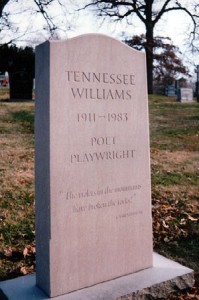



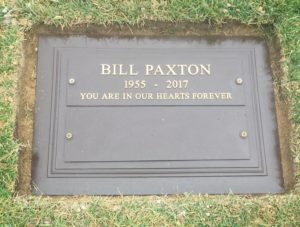 The Final Footprint
The Final Footprint 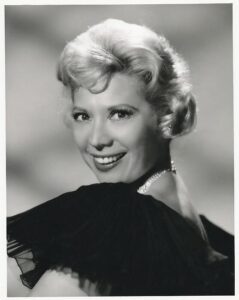 On this day in 1994, singer, actress, and television personality Dinah Shore died from ovarian cancer at her home in Beverly Hills, aged 77. Born Fannye Rose Shore on February 29, 1916 in . She was the top-charting female vocalist of the 1940s and achieved success a decade later, in television, mainly as hostess of a series of variety programs for Chevrolet.
On this day in 1994, singer, actress, and television personality Dinah Shore died from ovarian cancer at her home in Beverly Hills, aged 77. Born Fannye Rose Shore on February 29, 1916 in . She was the top-charting female vocalist of the 1940s and achieved success a decade later, in television, mainly as hostess of a series of variety programs for Chevrolet.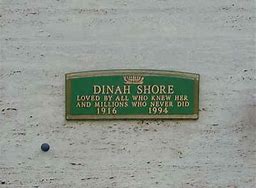 The Final Footprint
The Final Footprint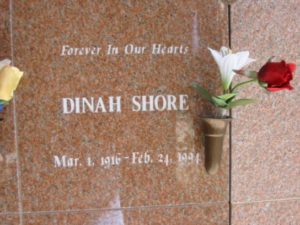 In both Cathedral City and Rancho Mirage, California, streets are named after her. Her hometown of Winchester, Tennessee, honored her with Dinah Shore Boulevard. In 1996, a Golden Palm Star on the Palm Springs Walk of Stars was dedicated to her. Other notable final footprints at Hillside Memorial include; Jack Benny, Milton Berle, Cyd Charisse, Moe Howard, Al Jolson, Michael Landon, Leonard Nimoy, Lupita Tovar, and Shelley Winters. Other notable final footprints at Forest Lawn Cathedral City include; Rock Hudson, Jerry Vale, Nancy Wilson, and Jane Wyman.
In both Cathedral City and Rancho Mirage, California, streets are named after her. Her hometown of Winchester, Tennessee, honored her with Dinah Shore Boulevard. In 1996, a Golden Palm Star on the Palm Springs Walk of Stars was dedicated to her. Other notable final footprints at Hillside Memorial include; Jack Benny, Milton Berle, Cyd Charisse, Moe Howard, Al Jolson, Michael Landon, Leonard Nimoy, Lupita Tovar, and Shelley Winters. Other notable final footprints at Forest Lawn Cathedral City include; Rock Hudson, Jerry Vale, Nancy Wilson, and Jane Wyman.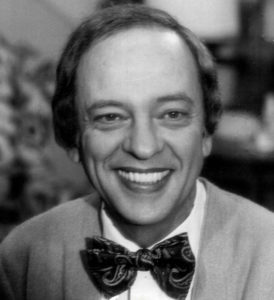 On this day in 2006, comedic actor, Don Knotts, died at the Cedars-Sinai Medical Center in Los Angeles, California from pulmonary and respiratory complications related to lung cancer at the age of 81. Born Jesse Donald Knotts on 21 July 1924 in Morgantown, West Virginia. Perhaps best known for his portrayal of Barney Fife on the 1960’s television sitcom The Andy Griffith Show, a role which earned him five Emmy Awards. He also played landlord Ralph Furley on the 1970’s television sitcom Three’s Company. The Andy Griffith Show was televised by CBS between 3 October 1960 and 1 April 1968. Andy Griffith portrayed a widowed sheriff in the fictional small town of Mayberry, North Carolina. In addition to the character Fife, the show featured his spinster aunt and housekeeper, Aunt Bee (Frances Bavier), and his young son, Opie (Ron Howard, billed as Ronny). The show was a major hit, never placing lower than seventh in the Nielsen ratings and ending its final season at number one and spawned a spin-off series, Gomer Pyle, U.S.M.C. (1964), a sequel series, Mayberry R.F.D. (1968), and a reunion telemovie, Return to Mayberry (1986). Reruns currently air across the United States, and the complete series is available on DVD. The opening theme song, “The Fishin’ Hole”, was composed by Earle Hagen. Rare is the person who has not whistled that tune. Knotts and Griffith formed a lifelong friendship. Knotts was married three times; Kathryn Metz 1(947–1964 divorce); Loralee Czuchna (1974–1983 divorce); and Frances Yarborough from (2002-2006 his death). He graduated from the University of West Virginia.
On this day in 2006, comedic actor, Don Knotts, died at the Cedars-Sinai Medical Center in Los Angeles, California from pulmonary and respiratory complications related to lung cancer at the age of 81. Born Jesse Donald Knotts on 21 July 1924 in Morgantown, West Virginia. Perhaps best known for his portrayal of Barney Fife on the 1960’s television sitcom The Andy Griffith Show, a role which earned him five Emmy Awards. He also played landlord Ralph Furley on the 1970’s television sitcom Three’s Company. The Andy Griffith Show was televised by CBS between 3 October 1960 and 1 April 1968. Andy Griffith portrayed a widowed sheriff in the fictional small town of Mayberry, North Carolina. In addition to the character Fife, the show featured his spinster aunt and housekeeper, Aunt Bee (Frances Bavier), and his young son, Opie (Ron Howard, billed as Ronny). The show was a major hit, never placing lower than seventh in the Nielsen ratings and ending its final season at number one and spawned a spin-off series, Gomer Pyle, U.S.M.C. (1964), a sequel series, Mayberry R.F.D. (1968), and a reunion telemovie, Return to Mayberry (1986). Reruns currently air across the United States, and the complete series is available on DVD. The opening theme song, “The Fishin’ Hole”, was composed by Earle Hagen. Rare is the person who has not whistled that tune. Knotts and Griffith formed a lifelong friendship. Knotts was married three times; Kathryn Metz 1(947–1964 divorce); Loralee Czuchna (1974–1983 divorce); and Frances Yarborough from (2002-2006 his death). He graduated from the University of West Virginia. 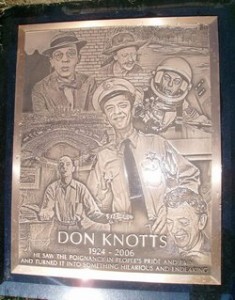
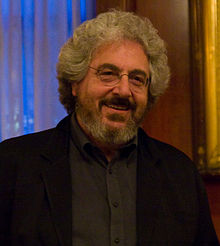 On this day in 2012, actor, director and writer Harold Ramis died from complications from autoimmune inflammatory vasculitis at his home on Chicago’s North Shore, at age 69. Born Harold Allen Ramis on 21 November 1944 in Chicago. Perhaps his best-known film acting roles are as Egon Spengler in Ghostbusters (1984) and Russell Ziskey in Stripes (1981); he also co-wrote both films. As a writer-director, his films include the comedies Caddyshack (1980), National Lampoon’s Vacation (1983), Groundhog Day (1993) and Analyze This (1999). Ramis was the original head writer of the television series SCTV, on which he also performed, and one of three screenwriters of the film National Lampoon’s Animal House (1978). His films have influenced subsequent generations of comedians and comedy writers. Ramis was married twice; Anne Plotkin (1967 – 1984 separated, later divorced) and Erica Mann (1989 – 2014 his death).
On this day in 2012, actor, director and writer Harold Ramis died from complications from autoimmune inflammatory vasculitis at his home on Chicago’s North Shore, at age 69. Born Harold Allen Ramis on 21 November 1944 in Chicago. Perhaps his best-known film acting roles are as Egon Spengler in Ghostbusters (1984) and Russell Ziskey in Stripes (1981); he also co-wrote both films. As a writer-director, his films include the comedies Caddyshack (1980), National Lampoon’s Vacation (1983), Groundhog Day (1993) and Analyze This (1999). Ramis was the original head writer of the television series SCTV, on which he also performed, and one of three screenwriters of the film National Lampoon’s Animal House (1978). His films have influenced subsequent generations of comedians and comedy writers. Ramis was married twice; Anne Plotkin (1967 – 1984 separated, later divorced) and Erica Mann (1989 – 2014 his death). 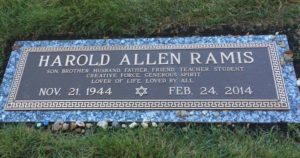

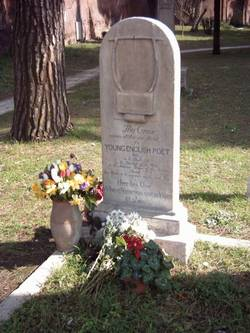 The Final Footprint – Keats is interred in the Protestant Cemetery (Italian: Cimitero protestante), officially called the Cimitero acattolico (“Non-Catholic Cemetery”) and often referred to as the Cimitero degli Inglesi (“Englishmen’s Cemetery”), a cemetery in Rome, located near Porta San Paolo. Shelley’s cremated remains are interred there as well. Keats’ last request was to be placed under a unnamed tombstone which contained only the words (in pentameter), “Here lies one whose name was writ in water.” His friends, Joseph Severn and Charles Armitage Brown, erected the stone, which under a relief of a lyre with broken strings, contains the epitaph: “This Grave / contains all that was Mortal / of a / Young English Poet / Who / on his Death Bed, in the Bitterness of his Heart / at the Malicious Power of his Enemies / Desired / these Words to be / engraven on his Tomb Stone: / Here lies One / Whose Name was writ in Water. 24 February 1821″
The Final Footprint – Keats is interred in the Protestant Cemetery (Italian: Cimitero protestante), officially called the Cimitero acattolico (“Non-Catholic Cemetery”) and often referred to as the Cimitero degli Inglesi (“Englishmen’s Cemetery”), a cemetery in Rome, located near Porta San Paolo. Shelley’s cremated remains are interred there as well. Keats’ last request was to be placed under a unnamed tombstone which contained only the words (in pentameter), “Here lies one whose name was writ in water.” His friends, Joseph Severn and Charles Armitage Brown, erected the stone, which under a relief of a lyre with broken strings, contains the epitaph: “This Grave / contains all that was Mortal / of a / Young English Poet / Who / on his Death Bed, in the Bitterness of his Heart / at the Malicious Power of his Enemies / Desired / these Words to be / engraven on his Tomb Stone: / Here lies One / Whose Name was writ in Water. 24 February 1821″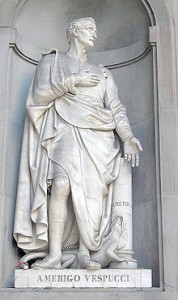
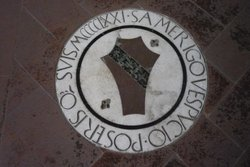
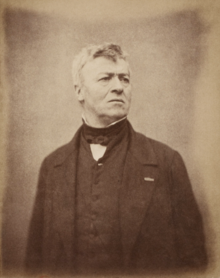 On this day in 1875, landscape and portrait painter as well as a printmaker in etching, Jean-Baptiste-Camille Corot died in his home, rue du Faubourg-Poissionnière, Paris, 10th arr. of a stomach disorder aged 78. Born in Paris on 16 July 1796, in a house at 125 Rue du Bac, now demolished. In my opinion, Corot is a pivotal figure in landscape painting and his vast output simultaneously references the Neo-Classical tradition and anticipates the plein-air innovations of Impressionism.
On this day in 1875, landscape and portrait painter as well as a printmaker in etching, Jean-Baptiste-Camille Corot died in his home, rue du Faubourg-Poissionnière, Paris, 10th arr. of a stomach disorder aged 78. Born in Paris on 16 July 1796, in a house at 125 Rue du Bac, now demolished. In my opinion, Corot is a pivotal figure in landscape painting and his vast output simultaneously references the Neo-Classical tradition and anticipates the plein-air innovations of Impressionism.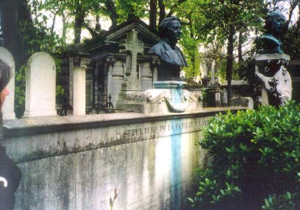 The Final Footprint – Corot is entombed at Père Lachaise Cemetery. Other notable Final Footprints at Père Lachaise include; Guillaume Apollinaire, Honoré de Balzac, Georges Bizet, Jean-Dominique Bauby, Maria Callas, Chopin, Colette, Auguste Comte, Amedeo Modigliani, Molière, Jim Morrison, Édith Piaf, Camille Pissarro, Marcel Proust, Sully Prudhomme, Gioachino Rossini, Georges-Pierre Seurat, Simone Signoret, Gertrude Stein, Dorothea Tanning, Alice B. Toklas, Oscar Wilde, and Richard Wright.
The Final Footprint – Corot is entombed at Père Lachaise Cemetery. Other notable Final Footprints at Père Lachaise include; Guillaume Apollinaire, Honoré de Balzac, Georges Bizet, Jean-Dominique Bauby, Maria Callas, Chopin, Colette, Auguste Comte, Amedeo Modigliani, Molière, Jim Morrison, Édith Piaf, Camille Pissarro, Marcel Proust, Sully Prudhomme, Gioachino Rossini, Georges-Pierre Seurat, Simone Signoret, Gertrude Stein, Dorothea Tanning, Alice B. Toklas, Oscar Wilde, and Richard Wright.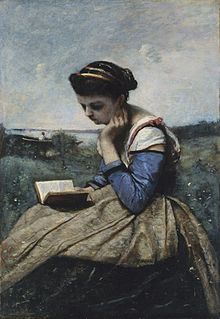
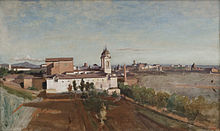








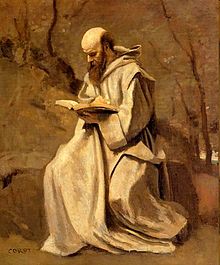
 On this day in 1987 artist Andy Warhol died in New York City at New York Hospital from a sudden post-operative cardiac arrhythmia following gall bladder surgery, at the age of 58. Born Andrej Varhola, Jr. on 6 August 1928 in Pittsburgh, Pennsylvania. Warhol was a leading figure in the visual art movement known as pop art. His works explore the relationship between artistic expression, celebrity culture and advertisement that flourished by the 1960s. After a successful career as a commercial illustrator, Warhol became a renowned and sometimes controversial artist. The Andy Warhol Museum in his native city, Pittsburgh, Pennsylvania, holds an extensive permanent collection of art and archives. It is the largest museum in the United States dedicated to a single artist. His art used many types of media, including hand drawing, painting, printmaking, photography, silk screening, sculpture, film, and music. He was also a pioneer in computer-generated art using Amiga computers that were introduced in 1984, two years before his death. He founded Interview Magazine and was the author of numerous books, including The Philosophy of Andy Warhol and Popism: The Warhol Sixties. Warhol managed and produced the Velvet Underground, a rock band which had a strong influence on the evolution of punk rock music. His studio, The Factory, was a famous gathering place that brought together distinguished intellectuals, playwrights, Bohemian street people, Hollywood celebrities, and wealthy patrons. Warhol has been the subject of numerous retrospective exhibitions, books, and feature and documentary films. He coined the widely used expression “15 minutes of fame”.
On this day in 1987 artist Andy Warhol died in New York City at New York Hospital from a sudden post-operative cardiac arrhythmia following gall bladder surgery, at the age of 58. Born Andrej Varhola, Jr. on 6 August 1928 in Pittsburgh, Pennsylvania. Warhol was a leading figure in the visual art movement known as pop art. His works explore the relationship between artistic expression, celebrity culture and advertisement that flourished by the 1960s. After a successful career as a commercial illustrator, Warhol became a renowned and sometimes controversial artist. The Andy Warhol Museum in his native city, Pittsburgh, Pennsylvania, holds an extensive permanent collection of art and archives. It is the largest museum in the United States dedicated to a single artist. His art used many types of media, including hand drawing, painting, printmaking, photography, silk screening, sculpture, film, and music. He was also a pioneer in computer-generated art using Amiga computers that were introduced in 1984, two years before his death. He founded Interview Magazine and was the author of numerous books, including The Philosophy of Andy Warhol and Popism: The Warhol Sixties. Warhol managed and produced the Velvet Underground, a rock band which had a strong influence on the evolution of punk rock music. His studio, The Factory, was a famous gathering place that brought together distinguished intellectuals, playwrights, Bohemian street people, Hollywood celebrities, and wealthy patrons. Warhol has been the subject of numerous retrospective exhibitions, books, and feature and documentary films. He coined the widely used expression “15 minutes of fame”. 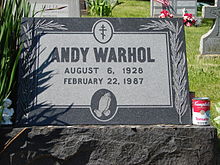
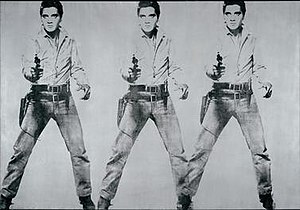
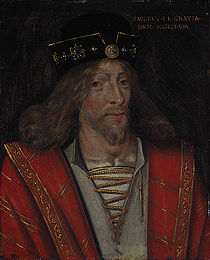 On this day in 1437, James
On this day in 1437, James I, King of Scots, was assassinated in a failed coup by his kinsman and former ally Walter Stewart, Earl of Atholl, at the Blackfriars monastery on the outskirts of Perth, Scotland. Born in Dunfermline Palace about July 1394; the son of Robert III of Scotland and Annabella Drummond. On 4 April 1406 Robert III died and the 12 year old prince became the uncrowned king of Scots. James was crowned on 21 May 1424. He ruled with a firm hand, achieving numerous legal and financial reforms, including remodeling the Scottish parliament after its English counterpart, and renewing the Auld Alliance with France. His actions, although very effective, upset many, namely the descendents of his grandfather, Robert II‘s second marriage (James was descended from the first marriage). Conflict arose between the two factions over who should be on the throne. The main conspirators in the regicide, Walter of Atholl, his grandson Robert Stewart and Robert Graham were executed. James was married to Joan Beaufort. James was succeeded on the throne by his son James II. A king named James would rule Scotland for 136 years through James I’s descendents; James II through James V. James V was succeeded by his only surviving legitimate child, Mary, Queen of Scots. Mary would be succeeded by the final James, her son James I of England, James VI, King of Scots. In My Defens, God Me Defend!
I, King of Scots, was assassinated in a failed coup by his kinsman and former ally Walter Stewart, Earl of Atholl, at the Blackfriars monastery on the outskirts of Perth, Scotland. Born in Dunfermline Palace about July 1394; the son of Robert III of Scotland and Annabella Drummond. On 4 April 1406 Robert III died and the 12 year old prince became the uncrowned king of Scots. James was crowned on 21 May 1424. He ruled with a firm hand, achieving numerous legal and financial reforms, including remodeling the Scottish parliament after its English counterpart, and renewing the Auld Alliance with France. His actions, although very effective, upset many, namely the descendents of his grandfather, Robert II‘s second marriage (James was descended from the first marriage). Conflict arose between the two factions over who should be on the throne. The main conspirators in the regicide, Walter of Atholl, his grandson Robert Stewart and Robert Graham were executed. James was married to Joan Beaufort. James was succeeded on the throne by his son James II. A king named James would rule Scotland for 136 years through James I’s descendents; James II through James V. James V was succeeded by his only surviving legitimate child, Mary, Queen of Scots. Mary would be succeeded by the final James, her son James I of England, James VI, King of Scots. In My Defens, God Me Defend!
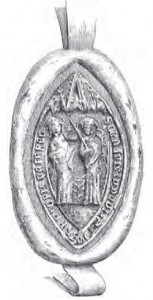
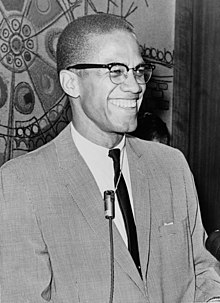
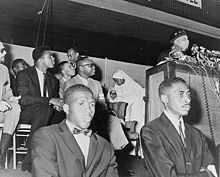
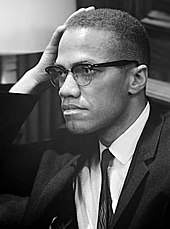
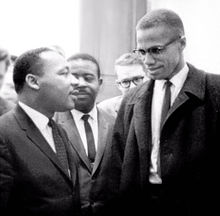

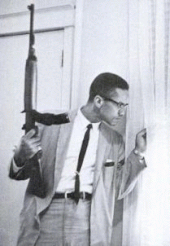
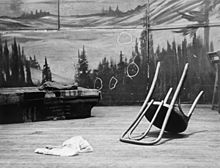
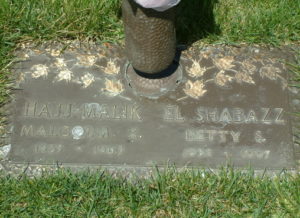 The Final Footprint
The Final Footprint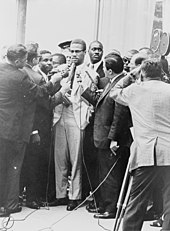

 On this day in 1895, social reformer, abolitionist, orator, writer, and statesman Frederick Douglass died from a heart attack in his home in Washington D. C., at the age of 77. Born Frederick Augustus Washington Bailey; c. February 1818 in . After escaping from slavery in Maryland, he became a national leader of the abolitionist movement in Massachusetts and New York, gaining note for his oratory and incisive antislavery writings. In his time, he was described by abolitionists as a living counter-example to slaveholders’ arguments that slaves lacked the intellectual capacity to function as independent American citizens. Northerners at the time found it hard to believe that such a great orator had once been a slave.
On this day in 1895, social reformer, abolitionist, orator, writer, and statesman Frederick Douglass died from a heart attack in his home in Washington D. C., at the age of 77. Born Frederick Augustus Washington Bailey; c. February 1818 in . After escaping from slavery in Maryland, he became a national leader of the abolitionist movement in Massachusetts and New York, gaining note for his oratory and incisive antislavery writings. In his time, he was described by abolitionists as a living counter-example to slaveholders’ arguments that slaves lacked the intellectual capacity to function as independent American citizens. Northerners at the time found it hard to believe that such a great orator had once been a slave. The Final Footprint
The Final Footprint On this day in 1936, actor Max Schreck died from a heart attack in Munich at the age of 56. Born Friedrich Gustav Maximilian Schreck on 6 September 1879 in Berlin. Perhaps best known for his lead role as the vampire Count Orlok in the film Nosferatu (1922).
On this day in 1936, actor Max Schreck died from a heart attack in Munich at the age of 56. Born Friedrich Gustav Maximilian Schreck on 6 September 1879 in Berlin. Perhaps best known for his lead role as the vampire Count Orlok in the film Nosferatu (1922).
 On this day in 2005, journalist and author Hunter S. Thompson died from a self-inflicted gunshot at his home, Owl Farm near Woody Creek, Colorado, at the age of 67. Born Hunter Stockton Thompson on 18 July 1937 in Louisville, Kentucky. Thompson traveled frequently, including stints in California, Puerto Rico and Brazil, before settling in Aspen, Colorado, in the early 1960s. He became internationally known with the publication of Hell’s Angels: The Strange and Terrible Saga of the Outlaw Motorcycle Gangs (1967). Thompson had spent a year living and riding with the Angels, experiencing their lives and hearing their stories first hand. With the publication in 1970 of “The Kentucky Derby Is Decadent and Depraved” he became a counter cultural figure, with his own brand of New Journalism he termed “Gonzo”, an experimental style of journalism where reporters involve themselves in the action to such a degree that they become central figures of their stories. The work he perhaps remains best known for is Fear and Loathing in Las Vegas: A Savage Journey to the Heart of the American Dream (1972), a rumination on the failure of the 1960s counterculture movement. It was first serialized in Rolling Stone, a magazine with which Thompson would be long associated, and was released as a film starring Johnny Depp and directed by Terry Gilliam in 1998. Politically minded, Thompson ran unsuccessfully for sheriff of Pitkin County, Colorado, in 1970, on the Freak Power ticket. He was well known for his inveterate hatred of Richard Nixon, whom he claimed represented “that dark, venal, and incurably violent side of the American character” and whom he characterized in what might be his greatest contribution to American Literature, Fear and Loathing on the Campaign Trail ’72. Thompson’s output notably declined from the mid-1970s, as he struggled with the consequences of fame, and he complained that he could no longer merely report on events as he was too easily recognized. He was also known for his lifelong use of alcohol and illegal drugs; his love of firearms, and his iconoclastic contempt for authoritarianism, and remarked that, “I hate to advocate drugs, alcohol, violence, or insanity to anyone, but they’ve always worked for me.”
On this day in 2005, journalist and author Hunter S. Thompson died from a self-inflicted gunshot at his home, Owl Farm near Woody Creek, Colorado, at the age of 67. Born Hunter Stockton Thompson on 18 July 1937 in Louisville, Kentucky. Thompson traveled frequently, including stints in California, Puerto Rico and Brazil, before settling in Aspen, Colorado, in the early 1960s. He became internationally known with the publication of Hell’s Angels: The Strange and Terrible Saga of the Outlaw Motorcycle Gangs (1967). Thompson had spent a year living and riding with the Angels, experiencing their lives and hearing their stories first hand. With the publication in 1970 of “The Kentucky Derby Is Decadent and Depraved” he became a counter cultural figure, with his own brand of New Journalism he termed “Gonzo”, an experimental style of journalism where reporters involve themselves in the action to such a degree that they become central figures of their stories. The work he perhaps remains best known for is Fear and Loathing in Las Vegas: A Savage Journey to the Heart of the American Dream (1972), a rumination on the failure of the 1960s counterculture movement. It was first serialized in Rolling Stone, a magazine with which Thompson would be long associated, and was released as a film starring Johnny Depp and directed by Terry Gilliam in 1998. Politically minded, Thompson ran unsuccessfully for sheriff of Pitkin County, Colorado, in 1970, on the Freak Power ticket. He was well known for his inveterate hatred of Richard Nixon, whom he claimed represented “that dark, venal, and incurably violent side of the American character” and whom he characterized in what might be his greatest contribution to American Literature, Fear and Loathing on the Campaign Trail ’72. Thompson’s output notably declined from the mid-1970s, as he struggled with the consequences of fame, and he complained that he could no longer merely report on events as he was too easily recognized. He was also known for his lifelong use of alcohol and illegal drugs; his love of firearms, and his iconoclastic contempt for authoritarianism, and remarked that, “I hate to advocate drugs, alcohol, violence, or insanity to anyone, but they’ve always worked for me.” 



 On this day in 1980, Scottish-born Australian rock musician, lead singer and lyricist of Australian heavy rock band AC/DC, Bon Scott, died in a parked car at 67 Overhill Road in East Dulwich, South London, at the age of 33. The official cause of death was listed as acute alcohol poisoning. Born Ronald Belford Scott on 9 July 1946 in Kirriemuir, Scotland. His family moved to Melbourne, Australia when he was six. Scott became the lead singer of AC/DC in 1974. The band went on to release some of the best heavy rock albums, in my opinion, including; Let There Be Rock, Powerage, If You Want Blood You’ve Got It and Highway to Hell. After Scott’s death, the remaining members of AC/DC, Angus Young, Malcolm Young, Cliff Williams and Phil Rudd briefly considered disbanding. However, they decided that Scott would have wanted them to continue. With the blessings of Scott’s family, the band hired Brian Johnson as the new vocalist and lyricist. Five months after Scott’s death, AC/DC finished the work they began with Scott and released Back in Black as a tribute to him with two tracks from the album, “Hells Bells” and “Back in Black”, dedicated to his memory. One of my all-time favorite bands.
On this day in 1980, Scottish-born Australian rock musician, lead singer and lyricist of Australian heavy rock band AC/DC, Bon Scott, died in a parked car at 67 Overhill Road in East Dulwich, South London, at the age of 33. The official cause of death was listed as acute alcohol poisoning. Born Ronald Belford Scott on 9 July 1946 in Kirriemuir, Scotland. His family moved to Melbourne, Australia when he was six. Scott became the lead singer of AC/DC in 1974. The band went on to release some of the best heavy rock albums, in my opinion, including; Let There Be Rock, Powerage, If You Want Blood You’ve Got It and Highway to Hell. After Scott’s death, the remaining members of AC/DC, Angus Young, Malcolm Young, Cliff Williams and Phil Rudd briefly considered disbanding. However, they decided that Scott would have wanted them to continue. With the blessings of Scott’s family, the band hired Brian Johnson as the new vocalist and lyricist. Five months after Scott’s death, AC/DC finished the work they began with Scott and released Back in Black as a tribute to him with two tracks from the album, “Hells Bells” and “Back in Black”, dedicated to his memory. One of my all-time favorite bands. 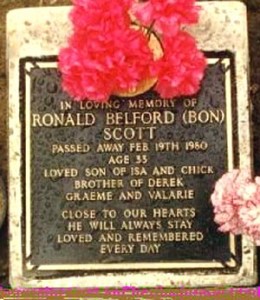
 On this day in 2016, novelist Harper Lee died in her sleep in Monroeville, Alabama at the age of 89. Born Nelle Harper Lee on April 28, 1926 in Monroeville, Alabama. Perhaps best known for To Kill a Mockingbird, published in 1960. Immediately successful, it won the 1961 Pulitzer Prize and has become a classic of modern American literature. In 2007 she was awarded the Presidential Medal of Freedom for her contribution to literature. She was also known for assisting her close friend Truman Capote in his research for the book In Cold Blood (1966). Capote was the basis for the character Dill in To Kill a Mockingbird.
On this day in 2016, novelist Harper Lee died in her sleep in Monroeville, Alabama at the age of 89. Born Nelle Harper Lee on April 28, 1926 in Monroeville, Alabama. Perhaps best known for To Kill a Mockingbird, published in 1960. Immediately successful, it won the 1961 Pulitzer Prize and has become a classic of modern American literature. In 2007 she was awarded the Presidential Medal of Freedom for her contribution to literature. She was also known for assisting her close friend Truman Capote in his research for the book In Cold Blood (1966). Capote was the basis for the character Dill in To Kill a Mockingbird.

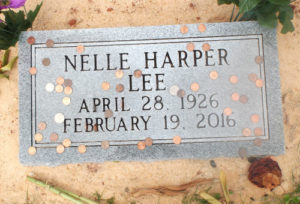
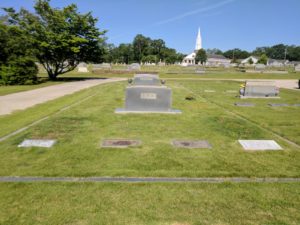 Lee was portrayed by Catherine Keener in the film Capote (2005), by Sandra Bullock in the film Infamous (2006), and by Tracey Hoyt in the TV movie Scandalous Me: The Jacqueline Susann Story (1998). In the adaptation of Truman Capote’s novel Other Voices, Other Rooms (1995), the character of Idabel Thompkins, who was inspired by Capote’s memories of Lee as a child, was played by Aubrey Dollar.
Lee was portrayed by Catherine Keener in the film Capote (2005), by Sandra Bullock in the film Infamous (2006), and by Tracey Hoyt in the TV movie Scandalous Me: The Jacqueline Susann Story (1998). In the adaptation of Truman Capote’s novel Other Voices, Other Rooms (1995), the character of Idabel Thompkins, who was inspired by Capote’s memories of Lee as a child, was played by Aubrey Dollar.